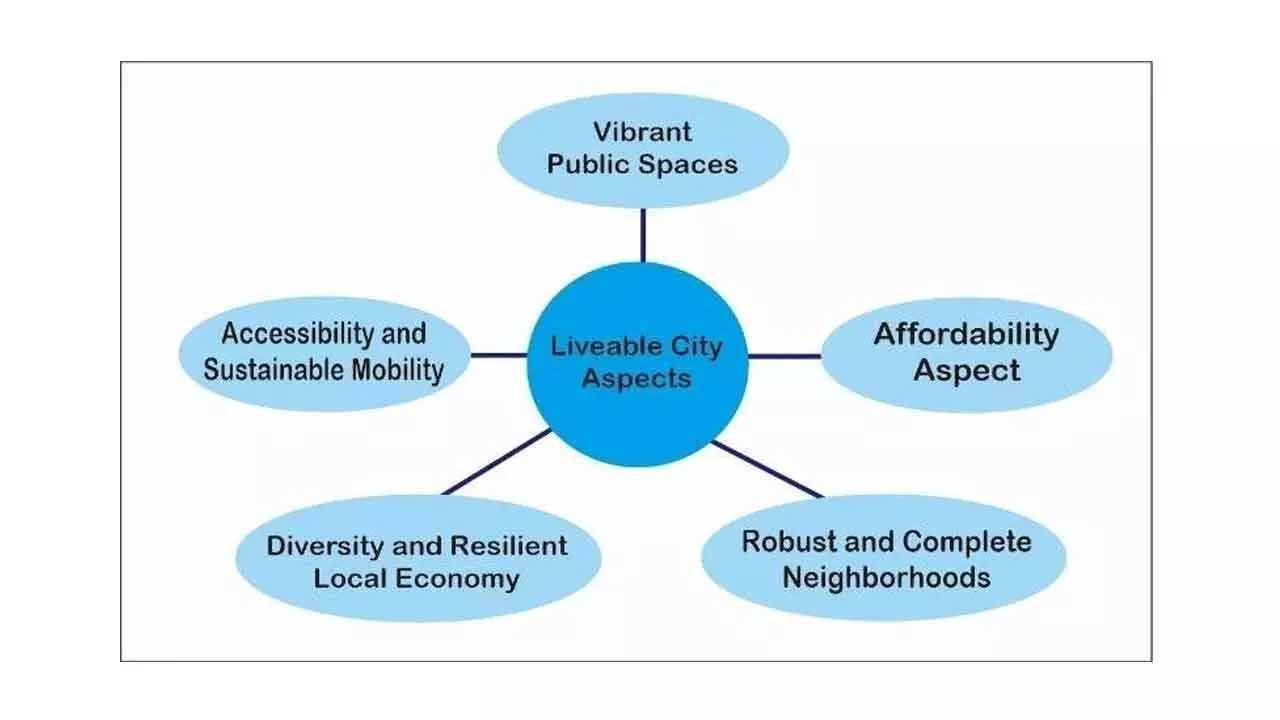The Need Of The Hour Is To Have Cities That Assure A Healthy Well-Being
As human society distances itself from nature, it’s no wonder that air quality is deteriorating severely
The Need Of The Hour Is To Have Cities That Assure A Healthy Well-Being

The city traffic doesn’t just result in anger, frustration, road rage, time loss and the never ending honking menace – it also contributes to GHG emissions as air-conditioned vehicles remain on the road for hours together
In essence, liveable cities are those areas that boast of aspects like clean environment, natural landscapes, affordable housing, urban planning, practical city design, policy support, public consensus, infrastructural and technological advancements, equal access to healthcare, education and cultural activities.
Modern urban cities feature many prominent feats like towering buildings, dense public networks, crowded markets, and digital connectivity. Ironically, they fail to provide the most basic and fundamental requirements for people to enjoy a good life.
The 21st century has bolstered the technological status of human beings, but it falls short on essential requirements like clean air, happiness, work-life balance, or a rich cultured life.
Here are some of the major reasons that make cities not truly reflective of living a good life.
Good air quality can be directly connected with the quality of overall life. It affects not just human beings but also harms natural beings like trees, plants, flowers, animals, birds, bees and insects.
As human society becomes more and more distanced from nature, it’s no wonder that air quality is deteriorating severely. Consequently, urban landscapes feature less and less natural life.
The presence of good quality air is fundamental to life and no city can be truly liveable until its air is clean!
Most of the urban landscape is made up of asphalt, concrete, glass, steel and aluminium, which can be found in buildings, panels, roads, coolers, vents and railways. These elements absorb heat and sunlight instead of reflecting it, thus growing hotter. In stark comparison, natural surroundings like grass, lawns, bushes, plants and trees keep the surrounding cool as they don’t absorb the heat and provide additional shades as well.
The skyscrapers, asphalt wide-roads, glass facades and heavily metallic character of city architecture results in the formation of a microclimate that’s polluted and hotter than nearby areas. Thus water bodies like pools, lakes, and even rivers dry up, plants fade away, and birds and animals face problems of survival.
Hot cities are dangerous for the climate as they emit a high volume of greenhouse gasses (GHGs). Higher temperature results in increased energy consumption as human activities rely more on air-conditioning technology and end up releasing methane and carbon into the environment.
A city that is good enough for living, should be dense with natural areas and constructed with eco-friendly elements that absorb less heat. The city climate should cultivate and nurture the ecosystem instead of destroying it.
In the 21st century modern life, everything is ultrafast, except for one thing – city traffic. In cities like Gurugram, Mumbai and Bangalore, traffic can be so excruciatingly slow that it can take more than 1-2 hours to move around even a radius of 5-7 km.
Traffic congestion and jams can occur due to many reasons, but in cities they are chiefly caused by poor design, faulty signage, and improper civil behaviour. The highways, roads, lanes, and bridges are often organized haphazardly resulting in lane-less driving, confusions, traffic merging, and other terrible blockages. Furthermore, citizens can flout basic rules to go wrong-side, skip lanes, jump lights, and even cut across unmotorable lands. Thus, an average citizen can end up commuting 2-3 hours (even 5-6 on a bad day) in the city traffic.
The city traffic doesn’t just result in anger, frustration, road rage, time loss and the never ending honking menace – it also contributes to GHG emissions as air-conditioned vehicles remain on the road for hours together.
As the corporate culture ups its game, and more and more startups push the boundaries to breaking point, maintaining a work-life challenge can feel like an impossible dream for an average citizen. Between juggling work emails, calls, clients, banking, and domestic chores, individual & community well-being is severely affected by the dearth of time. The demands of the ultra-fast, 24/7 connected, and digitally overloaded lifestyle leaves a lot of people feeling empty, frustrated, exhausted and suffering from mental or emotional sickness.
When the city life tips the scale towards material and economic development by squandering love, happiness, and quality time spent with friends, it automatically becomes a place unworthy of living. The overall well-being of human life and society is the chief feature of a liveable city. A city design, culture, and community that foster a healthy living environment is fundamental to life. Thus, maintaining work-life balance is crucial to enjoy life in all its glory.
Social media and digital mediums can be employed to highlight problems and initiate conversation and achieve public consensus. Artistic expressions, practical designs, and modern cultural practices can also influence the growth of liveable city.
Eventually, a dream city involves participation from not just one but the society as a whole. Thus, by practical methods and collective action, one can enjoy the experience of residing in a liveable city.

